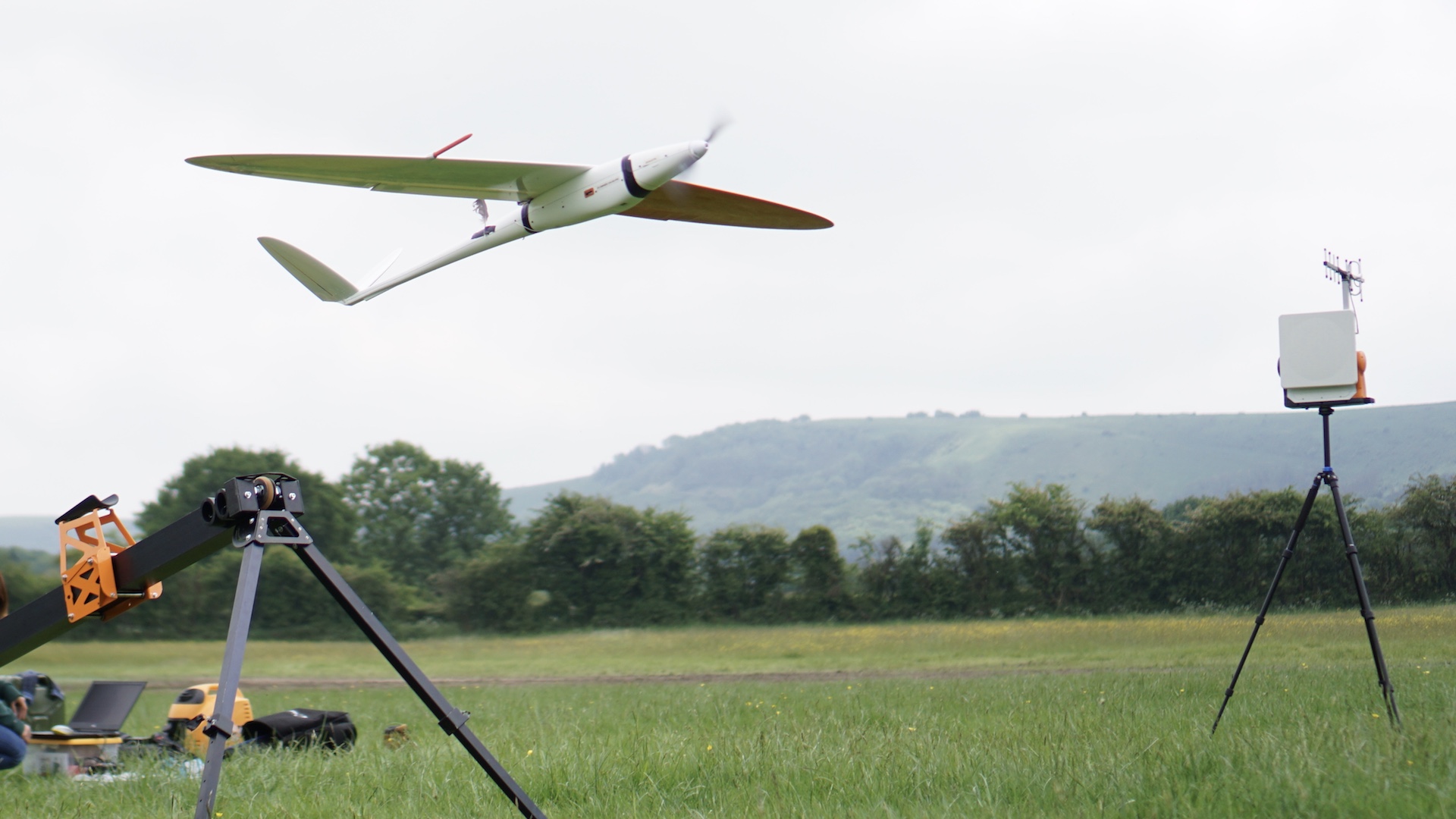

SenSat, a digital drone data provider, has just broken the beyond visual line-of-sight (BVLOS) record for the U.K., having successfully completed a 7.5-mile (12 kilometers) BVLOS flight and breaking the previous record by a factor of 10, according to the company’s press release. The London-based drone tech company was awarded Pathfinder status by the U.K. government, allowing it to perform BVLOS flights, as well as focus on its artificial intelligence-infused virtual mapping of the world to maximize productivity for various businesses.
Essentially, SenSat is digitizing the world. It’s virtually recreating objects and places, so that companies in the construction industry, for example, can plan and strategize their operations digitally and more well-informed, instead of commencing operations physically with far less functional data.
To do so, the company uses something called Structure from Motion (SfM) photogrammetry, which basically uses sophisticated GPS to combine digital aerial photographs with computer vision, to then recreate areas in thorough detail, up to a few centimeters. Mapp, as SenSat calls this A.I.-based tech, is then turned into functional data for companies who need to make more informed business decisions and desire smarter planning.
As for the record-breaking BVLOS flight on Monday, a SenSat pilot launched the fixed-wing drone from a catapult and had it fly over 7.5 miles away from him. The current U.K. regulations don’t allow flights to venture farther than 500 meters from their pilots, and leaving their sight. SenSat’s Pathfinder status, of course, freed the company of this stricture, and allowed the company to set a substantial record.
Take a look at the historic flight as it completes. The energy in the room really gives you a sense of how important this mission was for everyone involved.

The consequences of this achievement are comprised of potentially exorbitantly increased cost efficiency for various companies in need of highly detailed photogrammetry such as construction, surveying, mapping businesses, as well as initiating a potential turning point for future aerial delivery of food and goods.
BVLOS regulation, after all, is what has been hampering drone-infused businesses from automating their planned deliveries. If SenSat can continue to prove itself as a safe and reliable drone company that regularly completes BVLOS flights, then future U.K. drone policy could sway in its favor, and allow other businesses to finally commence aerially delivering packages without the need of a pilot to keep the unmanned aerial vehicle in sight.
“BVLOS is often cited as the turning point for our industry, it is the moment from which we can begin to see drones truly making a positive impact on our daily lives,” said SenSat CEO James Dean. “At SenSat we are using that advantage to make data freely available, with the ultimate goal of driving better decision making that brings transparency and consistency across publicly funded infrastructure projects.”
In terms of corporate effects, SenSat claims its newly permitted operations could decrease the price of drone data by up to 90 percent, which, in turn, would allow a greater swath of commercial clients to utilize said drone data to improve and maximize their businesses and services. The required 470 individual drones that would’ve been required to survey the London-Birmingham railway project, for example, can be completed by SenSat in a mere seven flights now. That’s a dramatic shift, the repercussions of which will arguably drastically change a few industries in the near future.

“Drones have the potential to bring great social and economic benefits to the U.K. so it’s inspiring to see a British company helping to unlock these benefits with cutting edge technology and engineering,” said Aviation Minister Baroness Sugg. “The Government wants the U.K. to be a global leader in drone services which is why we have begun introducing a world class legal framework to ensure this exciting technology is used safely and responsibly – which in turn will support the industry to thrive.”
If SenSat’s estimates are correct, the Baroness is right on the money. The drone data company is currently capable of flying more than 870 miles (1,400 km) in a single day at one-tenth of the cost, and ultimately believes that its services could create more than 600,000 jobs in the drone economy by 2030. Ultimately, this is an enormous feat for not only SenSat, but the drone industry in general. If lawmakers and governments can cast aside their risk-averse approach toward loosened drone regulations, and trust in safe, rational drone operations of entities like SenSat, we’ll inevitably reach a more practical and net-beneficial drone regulation framework in the near future, both in the U.K. and abroad.